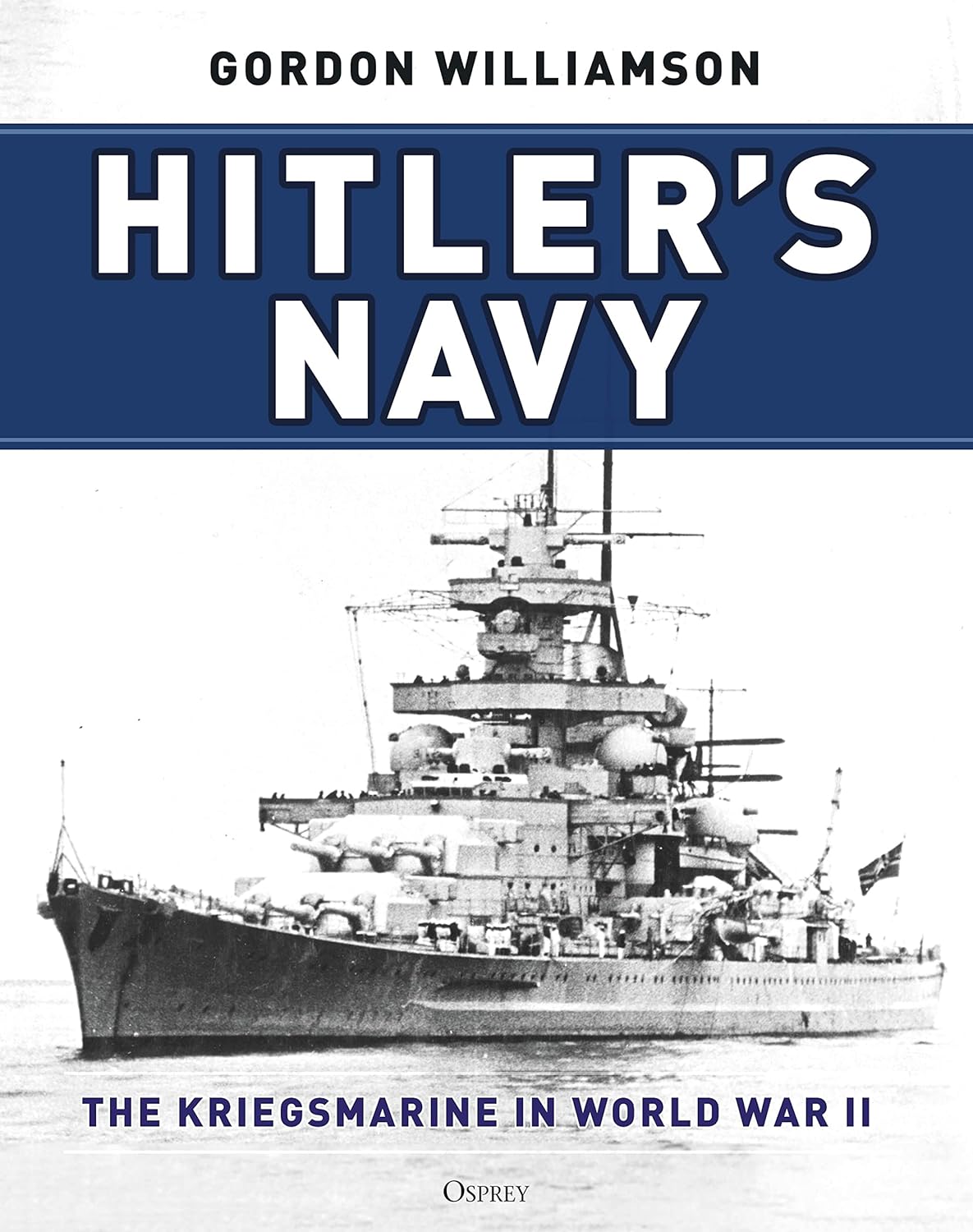Hitler's Navy: The Kriegsmarine in World War II
By Gordon Williamson

Broad in scope and rich in detail, Hitler’s Navy is a comprehensive overview of the ships, organization, and sailors of the Kriegsmarine. As befits Osprey’s core competency in producing monographs of famous ships and classes, the work is lavishly illustrated and full of technical detail. For those seeking focused accounts of famous campaigns or battles, such as the River Plate, Denmark Strait or the Norwegian Campaign, this is not the work. These engagements have been the focus of many previous works, and the author chooses to give them a minimalist summary in his first chapter. But Hitler’s Navy makes up for the lack of fighting narrative in its ambitious breadth.
Not only does Williamson cover the usual suspects—Bismarck, Tirpitz, the pocket battleships, and the U-boats—he gives a full accounting of the lesser-known but often harder-fought light vessels. Significant coverage is given to the light and coastal forces: S-boats, minesweepers and minelayers, torpedoboote, sperrbrechers, and human torpedoes, as well as to the auxiliary cruisers, raiders, and their global network of replenishment ships. His coverage of the U-boat arm—the navy-within-the-navy which came to dominate the Kriegsmarine as the larger ships were checked by Allied sea power—is a brisk but comprehensive look at the progression from small coastal types to the seagoing boats of the Battle of the Atlantic, and finally to the highly advanced elektroboote of the war’s waning days. Regardless of size or category, each ship type and class is shown in evolving fashion to reflect the changes in warfare from 1939 to 1945 as radar and anti-aircraft capability become increasingly vital.
Hitler’s Navy also takes time to paint a picture of service in the Kriegsmarine for the average officer and rating. Training, schools, technical specialty groupings, rank, pay, and uniform are touched on. It is in this section, however, that Williamson treads on dangerous ground. His frank admiration for the Kriegsmarine shows through clearly. It is both true and important to understand that the Kriegsmarine was the most traditional and least Nazi-fied of the various branches of service, it might have been better fir the author to temper his admiration somewhat.
Unfortunately, Williamson’s sweeping scope is also compromised by slipshod editing. One gets the feeling that there were many more pages of material provided than fit within its pages, leaving it to editors to determine best fit. There are several incorrect or reversed illustrations and captions throughout the book which add a bit of momentary confusion until the reader sorts them out.
More surprisingly, there are a few technical inconsistencies, which are not in keeping with Osprey’s typical attention to detail. These factual differences serve more to highlight a compromised editing process rather than any lack of knowledge on the author’s part. These niggling issues prevent a very good reference from becoming a great work, but the book is nevertheless both solid and worthwhile for any avid naval historian who wants a single solid source for a review of the Kriegsmarine from its origins in the interwar years to the wreckage that marked its end.
- Oxford: Osprey Publishing, 2022
- 7-3/4” x 9-3/4”, hardcover, 256 pages
- Illustrations, maps, tables, index. $40.00
- ISBN: 97814728247928
Reviewed by: Jeremy Costlow, Little Rock, Arkansas
